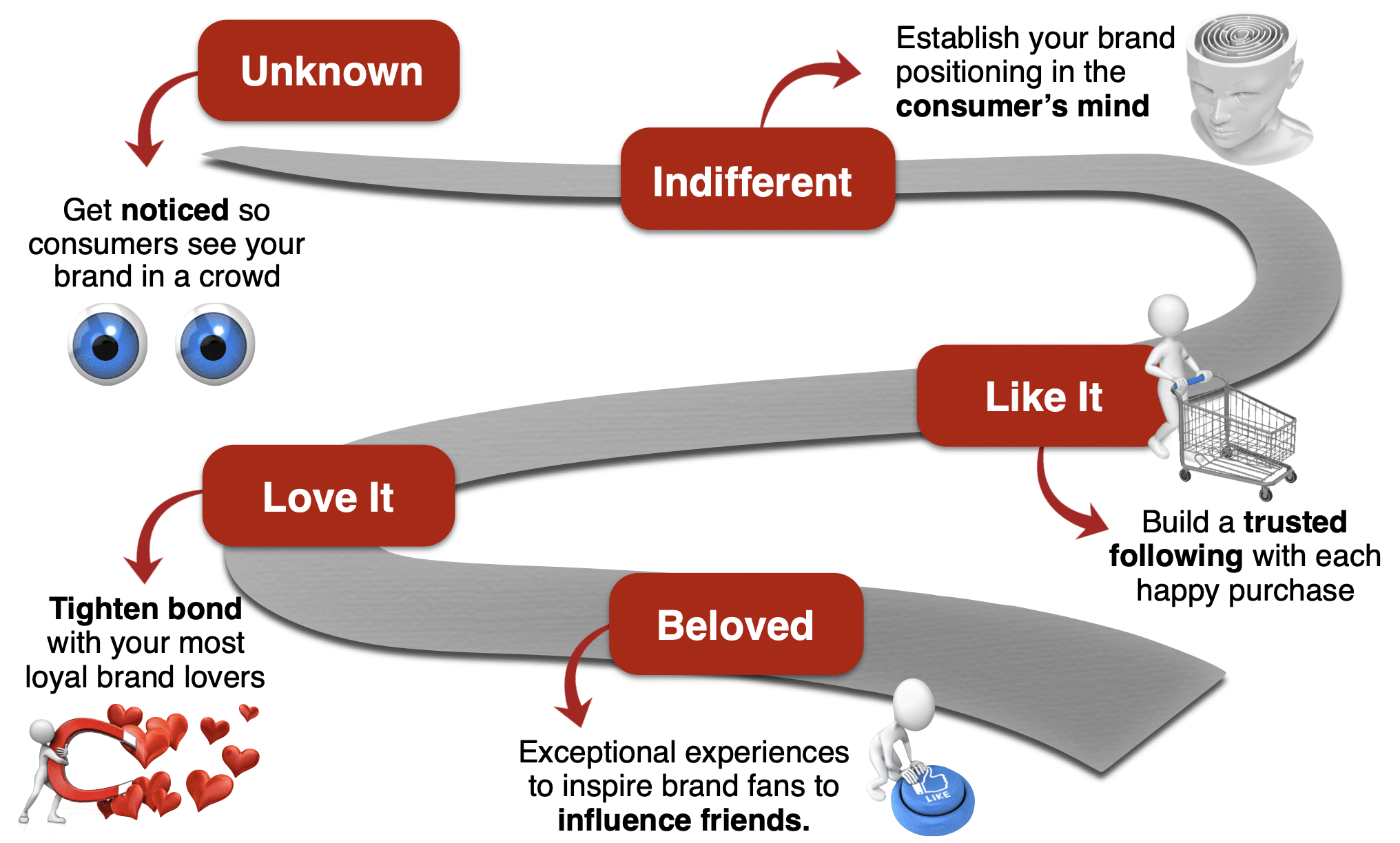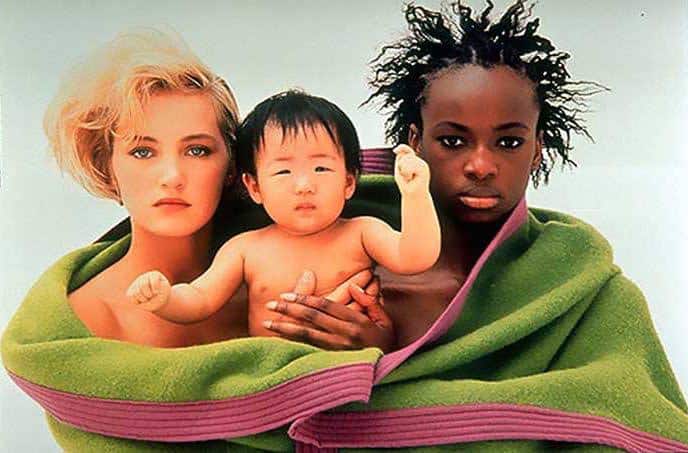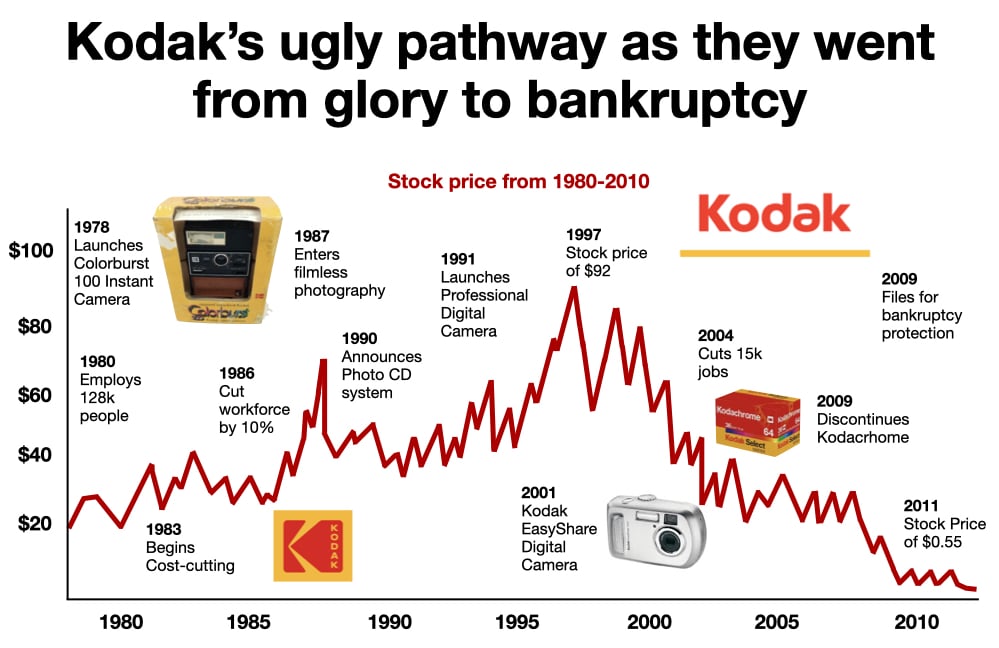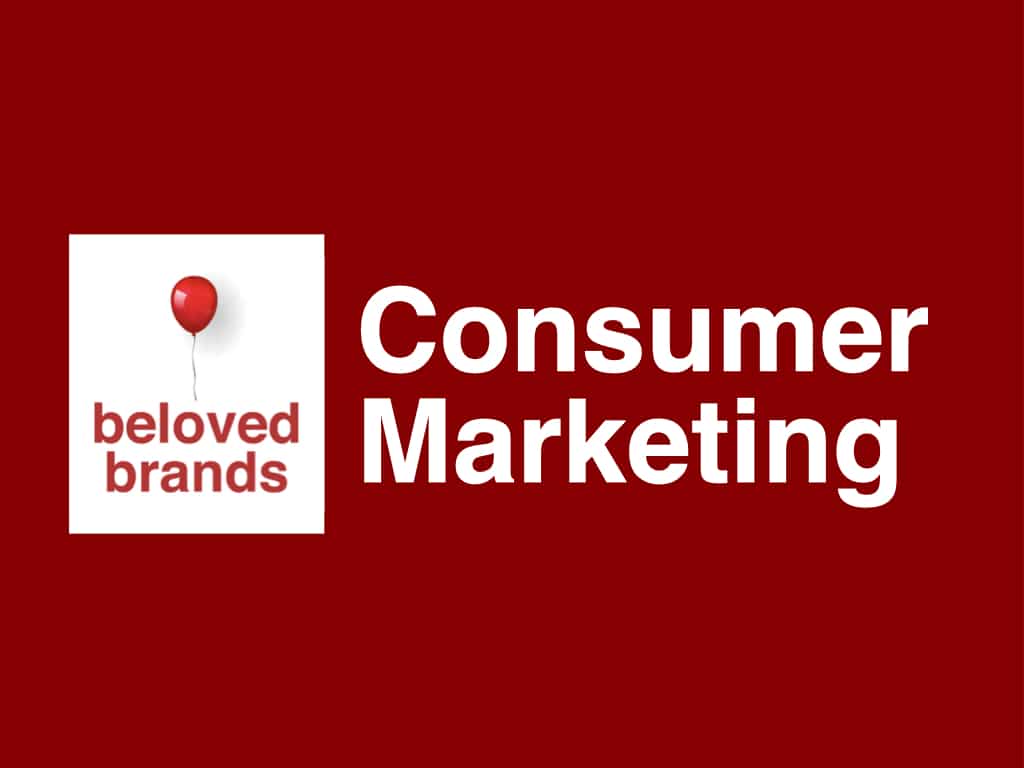Very few beloved brands stay on top for long. We live in the moment, so it is hard to imagine that Starbucks, Amazon, Google, Uber, Tesla, Apple or Nike would ever collapse. While there are no signs any of those brands will, history tells you that a few of them will falter. Staying at the top is just as hard as getting there. Just ask former beloved brands that have fallen from grace, including Blackberry, Gap Clothing, Kodak, Cadillac or Benneton.
Brands usually have a turning point, based on a decision they have made or a decision they avoided making. They lose touch with the reality of their marketplace. They ignore competitors, stop listening to consumers or fail to attack themselves. If you fail to attack yourself, you can add your brand to a future list of brands that fell from grace.
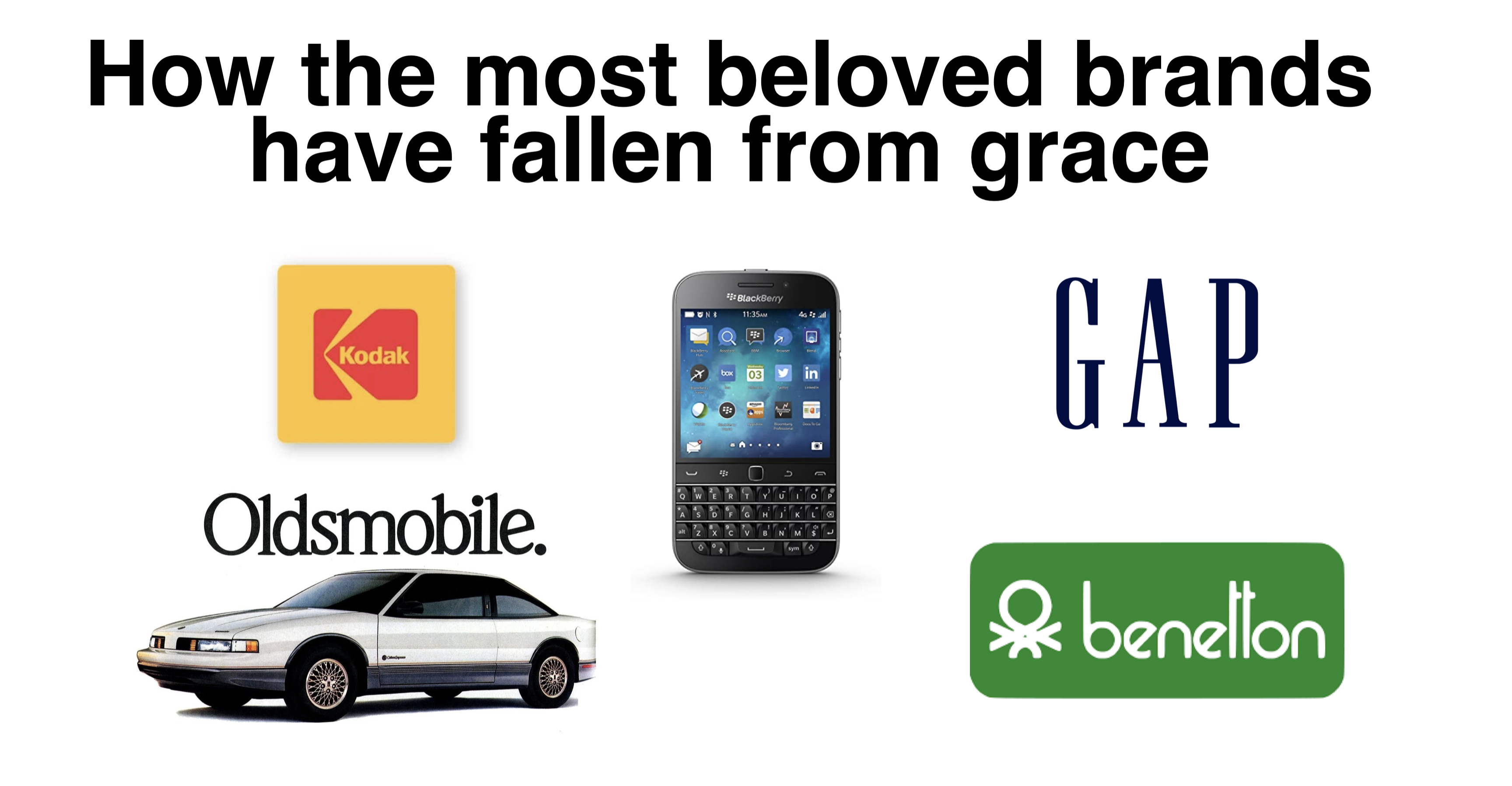
Consumer strategy
The stages of the brand love curve.
I always believe it takes a strategic mind to figure out brand love.
For new brands, they were completely “unknown” to consumers. Unless there were genuinely compelling messages, consumers would walk past without even looking. To achieve some success, the priority for these brands is to get noticed within the clutter of the market.
At the “indifferent” stage, consumers feel O.K. about the brand, similar to how they usually feel about commodities, like fruit and vegetables. These brands satisfy the consumer’s basic needs. Consumers will only buy the brand when it is on sale, but switch back to their other brand choice when it is not. Make your brand more than just a commodity. Brands need to be better, different, or cheaper. Otherwise, they will not be around for long, and you waste your investment.
To illustrate, click on the consumer strategy and brand love curve.
Brands that reach the “like it” stage experience the first sign of business success. Their consumers see the brand as a logical, functional, and smart choice. However, the lack of any emotional connection leaves the purchase up to chance. Consumers will still switch brands randomly. Brands at the like it stage stress the product performance so much they forget to trigger any emotions.
The more loved a brand, the more power and profit you will generate.
Brands at the “love it” stage start to see more emotionally engaged consumers. The rule of love you must follow: Consumers must love the brand before you can tell consumers you love them. Consumers see the brand as a favorite choice, usually connected to a favorite part of their day. They are loyal and build the brand into a routine. These brands must also find a way to demonstrate their love toward consumers and continue to tighten the bond with their most loyal brand lovers.
The “beloved brand” stage is where the brand becomes iconic, with a core base of brand lovers who cherish and defend the brand. These consumers see the brand as a personal choice, a badge they proudly hold in their hand or wear on their feet. At the beloved stage, the brands must create magical experiences that inspire brand lovers to share with their friends.
The marketing fundamentals matter.
The marketing fundamentals that we show in this article are part of what we use in our marketing training programs. And, the material can be found in our Beloved Brands playbook which you can find on Amazon.
Beloved Brands playbook
Our Beloved Brands playbook goes in depth on everything you need to build a brand consumers will love. Learn about strategic thinking, brand positioning, writing brand plans, advertising decisions, media planning, marketing analytics, and financials.

Our readers tell us they keep our Beloved Brands playbook close by for whenever they need to take on a new project. Clearly, we are thrilled that 89% of Amazon reviewers have given Beloved Brands a 5-star rating. Also, we wrote a B2B Brands playbook and a Healthcare Brands playbook.
Oldsmobile
The beloved brand that fell from grace because they struggled to keep up with the times.
The beloved brands of General Motors, including Cadillac, Oldsmobile and Corvette, fell from grace. Not only only did they peak in the 1970’s, but found themselves stuck their as well. The 70’s were one of those decades with such a distinct look with Disco, perms, gold chains and the 3-piece suit, that most things connected to the 70’s were completely rejected in the 1980’s.
The Oldsmobile was a classic American family car who sales soared through the 1970’s. By the mid-80’s, in an effort to try to capture a new generation, they used the infamous tagline of “Not your father’s Oldsmobile” which only re-enforced that it IS your father’s Oldsmobile.The near-bankruptcy of General Motors can be traced back to the 1970’s when the brands peaked and yet felt stuck in a time-warp forever.
GM failed to keep up in design, and failed to change as gas prices rose dramatically. They found themselves attacked on the lower end from the Japanese cars like Toyota and Honda and at the higher end from German brands like Mercedes, Porsche, Audi and BMW.
To illustrate, click on the ad from the fallen beloved brand.
Benetton
The beloved brand who forgot who they were and what made them famous.
Benetton is great example of a brand who fell from grace because they forgot what made them famous. In 1990, Benetton could do no wrong. Business schools wrote case studies of their success and Ad Agencies held them up as the brand of envy for all clients to learn from. They had shock-value advertising campaigns that people talked about at the lunch table and there was a Benetton store in every mall. Their colorful and stylish fashion was the desire of the core teenage crowd.
Benetton’s brand promise was providing European fashions at an affordable price. But the arrogance of the “can do no wrong” brand quickly faded. While they were so busy creating shock-value advertising and arrogantly talking of their brand as it were art itself they forgot about the fashion part of the business. Benetton started to look like a hollow promise of cool ads with not-so-cool clothing. Benetton expanded so broadly and so fast, they opted for franchises instead of maintaining ownership over the distribution.
To illustrate, click on the ad from the fallen beloved brand.
Kodak
The beloved brand that fell from grace because they were afraid to attack themselves.
Kodak was such a revered brand for so long. But they refused to attack themselves and fell from grace. This opened up so many windows of attack from others. The first attack came in the traditional film business from low-priced Fuji film. Kodak did nothing to stop Fuji for fear of eroding their margin, letting Fuji gain a 17% share of the film market.
The second attack came from new entrants into the digital camera market before Kodak was ready to enter. Kodak invented the first digital camera as early as 1975. They never launched the product. Kodak feared the digital camera threatened Kodak’s photographic film business. In 1990 Kodak finally laid out a plan to enter the digital camera market. But, they took another decade to finally enter the market.
The world was changing, yet Kodak executives still could not fathom a world without traditional film.
However, they saw little incentive to deviate into the digital camera space. The third attack came once Kodak entered the digital camera space. Kodak entered at the high-end of the market and for a brief moment was the #1 digital camera. But Kodak failed to recognize how quickly the digital camera market would become commoditized. They did cut their prices, but couldn’t lower their cost of goods fast enough to keep up with the Japanese manufacturers. Kodak’s traditional film business was dying.
The result: Bankruptcy. Interestingly enough, at the time of their bankruptcy, Kodak released 1000’s of patents for sale. Kodak’s refusal to act on the right innovation in a timely fashion killed the Kodak brand. They failed to attack themselves only to let others attack and ultimately destroy them. Kodak is definetly an example of brands that failed.
To illustrate, click on the path Kodak took as it fell from a beloved brand.
Blackberry
The beloved brands that lost focus and let their consumer experience slide.
A case study in a brand that fell from grace because their consumer experience not living up to expectations is the Blackberry. It’s a classic case where they grabbed early share as the category innovator and then forgot to keep making improvements to the overall experience. The list of problems for blackberry is long: major service outages, keyboard that sticks, small screen size, bad cameras, poor quality speaker-phone, slow internet browser and when the screen freezes you have to take the battery out and re-boot. In my last few months as an angry blackberry user, I was taking the battery out 5x a day.
The leaders at Blackberry believed they were invincible almost laughing when Apple launched the iPhone. These guys would next launch a tablet without any Apps on it. Oh man! What I think Blackberry’s biggest failure is not mapping out the customer experience and attacking every possible weakness. And, the blackberry experience has just not kept pace with Android and Apple. As a result, the Blackberry share price is down 98% since its peak of 2008. It is an example of brands that failed.
Remember taking the Blackberry battery out and putting it back in?
Gap
The beloved brand who made the wrong strategic choices because they thought of themselves before the consumer.
Gap Clothing got greedy and forgot what made them great: trendy American fashion for a stylish generation at a reasonable price. And who is the spokesperson for fashion–those who think they are the coolest people on earth–TEENAGERS of course. Every generation of teens believes they are the most important people on earth and they want products that speak for their generation. It’s all about them. They influence Music, Movies, TV Shows and Clothing and believe each has to speak directly to them and for them. Imagine being 15 in the late 90’s, you’re walking in your favorite mall, trying to be as cool as can be, heading for your favorite clothing store.
A Gap for everyone means a Gap for nobody.
All of a sudden, if kids looked up, they saw favorite clothing brand flanked by BABY GAP and GAP MATERNITY. How could this brand speak for the teen generation. Your 2-year-old nephews are wearing a mini-version of what you’re wearing. Or even worse, your pregnant Aunt is wearing the stretchy version. GAP made the mistake of putting their name on all their line extensions, which most fans of Master Brands thinks strengthens the brand but it actually runs the risk of actually weakening the brand. GAP also forgot about feeding that desire for leading edge, trendy clothing–the whole reason for that “8 seasons” rotation of inventory.
Go into a GAP store this year, and you’ll realize how boring and drab the products have become. No teenager today loves GAP or even thinks much about GAP. They are totally indifferent. Fast forward to 2020, GAP Clothing sales are significantly since the peak of 2005. They have just announced the closing of 200 stores–which will continue the downward spiral. The Gap definitely fell from grace.
Maintaining brand love
Focus on maintaining the magic and love the brand has created with the core brand fans.
Focus most of your attention on those who love you the most. Treat them special. Listen to your consumer, giving them a voice at the table, with the brand being responsive as it can. Market the Big Idea, sell the innovation and the experience. Continue to invest in product innovation and brand experience. Leverage both into telling the overall brand story, using the big idea to push the marketing effort in two separate layers: tell the master brand story about the big idea and the related experience, tell the specific product innovation stories linking how they support and build on the brand’s big idea.
Perfect the experience.
For those who love the brand, it is no longer just about the product, it becomes about the experience. Build a culture and organization around the brand that will keep finding new ways to surprise and delight consumers. Perfect every possible touchpoint with the consumer. Attack the brand before it can be attacked by others: However, many times, the biggest competitor for these brands is the brand itself. The constant goal has to be about getting better. Any degree of complacency will set the brand up for future attacks. Never become complacent or these brands will be replaced by challenger brands wanting to achieve the beloved status.
Broaden the offering and broaden the audience.
Take advantage of your brand’s loyal following to launch peripheral products that build on the routine. Capture more share of wallet of your most loyal consumers.To ensure you are a brand that goes beyond the current generation of consumers, begin thinking about how to spread your brand to other age groups. A lot of fashion brands and restaurant brands have been trapped into the current generation and lose the status as styles change.
The most beloved brands keep the love alive, attack themselves, and engage their brand fans to act as spokespeople.
𝗥𝗲𝗯𝗿𝗮𝗻𝗱𝗶𝗻𝗴 𝗱𝗶𝘀𝗮𝘀𝘁𝗲𝗿𝘀: 𝗖𝗮𝘂𝘁𝗶𝗼𝗻𝗮𝗿𝘆 𝘁𝗮𝗹𝗲𝘀 𝗳𝗿𝗼𝗺 𝗯𝗿𝗮𝗻𝗱𝗶𝗻𝗴 𝗺𝗶𝘀𝗵𝗮𝗽𝘀"
When it comes to rebranding, success stories can catapult a brand to new heights. But not all rebranding efforts end on a high note. In this post, we’ll explore some infamous rebranding disasters that offer cautionary tales and essential insights for marketers in the branding arena.
💡 𝗙𝗶𝗿𝘀𝘁 𝘁𝗵𝗶𝗻𝗴𝘀 𝗳𝗶𝗿𝘀𝘁: “𝗜𝘀 𝗮 𝗿𝗲𝗯𝗿𝗮𝗻𝗱 𝗧𝗥𝗨𝗟𝗬 𝗻𝗲𝗰𝗲𝘀𝘀𝗮𝗿𝘆?” 🤔
Sometimes, a logo refresh feels like hastily cleaning up when you hear your mom is about to visit – clutter is just shoved into a drawer. The real issues remain hidden.
⚠️ 𝗣𝗮𝘂𝘀𝗲. 𝗥𝗲𝗳𝗹𝗲𝗰𝘁. 𝗔𝗰𝘁. ⚠️
Before jumping into rebranding, take a step back. Conduct a comprehensive business review for more informed decision-making. Reassess your brand positioning statements and pinpoint key issues impacting your brand. Only THEN should you reevaluate the logo
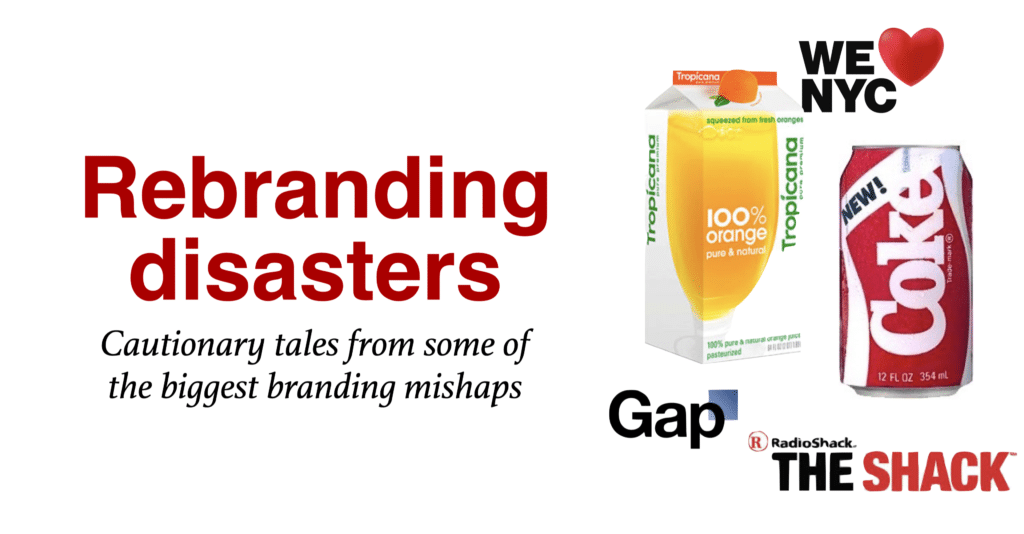
🌟 With 20 years in marketing, I’ve been fortunate enough to work on some of the world’s most iconic brands. While I’ve tweaked a few packages, I can’t remember EVER redesigning a logo – let alone even considering it.
Click on the link to read our new article: “𝗥𝗲𝗯𝗿𝗮𝗻𝗱𝗶𝗻𝗴 𝗱𝗶𝘀𝗮𝘀𝘁𝗲𝗿𝘀: 𝗖𝗮𝘂𝘁𝗶𝗼𝗻𝗮𝗿𝘆 𝘁𝗮𝗹𝗲𝘀 𝗳𝗿𝗼𝗺 𝗯𝗿𝗮𝗻𝗱𝗶𝗻𝗴 𝗺𝗶𝘀𝗵𝗮𝗽𝘀“
Marketing Careers
On a classic marketing team, there are four key levels:
- Assistant Brand Manager.
- Brand Manager.
- Marketing Director or Group Marketing Director.
- VP Marketing or CMO.
To illustrate, click to zoom in on the brand management career pathway.
At the Brand Manager level, it becomes about ownership and strategic thinking within your brand plan. Most Brand Managers are honestly a disaster with their first direct report, and get better around the fifth report.
When you get to the Marketing Director role, it becomes more about managing and leading than it does about thinking and doing. To be great, you need to motivate the greatness from your team and let your best players to do their absolute best.
And finally, at the CMO level, you must create your own vision, focus on your people to make them better and shine, drive the business results, and run the processes.
Our Beloved Brands Marketing Training program will make your team smarter.
If you are running a marketing team, you will always benefit from having a smarter team. When you invest in our marketing training program, you will help your team gain the marketing skills they need to succeed. As a result, you will see them make smarter decisions and produce exceptional work that drives business growth.
We’ll work with your team to help them learn more about the five core marketing skills: Strategic Thinking, Brand Positioning, Marketing Planning, Marketing Execution, and Brand Analytics. Most importantly, your marketers will learn new tools, concepts, and ideas to trigger new thinking. To help their skills, we get participants to take each tool on a test run. Then, we give feedback for them to keep improving.
To illustrate, click to zoom in on the brand management career pathway.
Strategic Thinking:
Our marketing training teaches brand leaders how to ask tough strategic questions to slow everyone down and engage in debate of options to move forward. To start, you will be given various tools to approach strategy in a thoughtful, analytical way. Importantly, marketers need learn how to change brain speeds to move from a strategic thinker style to uncover what is holding back a brand, and onto an instinctual thinker style on marketing execution.
We introduce our Strategic ThinkBox that allows marketers to interrogate their brand. Importantly, our ThinkBox pushes you to take a holistic look at the brand’s core strength, competitive landscape, tightness of the consumer bond, and business situation.
Brand Positioning:
Our brand positioning process teaches how to decide on the target market, consumer benefits, and reasons to believe. To start, you will learn to define the ideal consumer and frame the definition with their biggest needs, consumer insights and their enemy. Then, we provide our benefit cheatsheets to help learn how to discover the functional benefits and emotional benefits that a brand can deliver. Importantly, marketers need to make a decision on trying to stake out a unique space that is motivating to consumers, and ownable for the brand.
Learn to use our brand idea tool and see how it helps to communicate the brand idea to everyone across the organization. Finally, marketers will learn how to take the brand positioning work and translate it into a brand concept, brand story, and a brand credo.
Marketing Plans:
We see the marketing plan is a decision-making tool on how a brand will spend their limited resources. Moreover, the marketing plan communicates the expectations to everyone who works on the brand. Importantly, we teach marketers how to put together the vision, purpose, goals, key issues, strategies and marketing execution plans.
Learn how to write key issue questions and strategic statements that forms the foundation of the marketing plan. In addition, our marketing training provides various marketing planning templates including our one-page brand plan and ideal Marketing Plan presentation deck.
Marketing Execution:
Our marketing execution training starts with the concept of our Marketing PlayBox that matches up to the Strategic ThinkBox. To keep marketers on strategy throughout the execution stages, our Marketing PlayBox helps find in-the-box ideas that meet four dimensions: they are focused on our target, fit with the brand, deliver the message, and execute the strategy.
To start, we show how the creative brief sets up the PlayBox, serving as the bridge between the plan and execution. We go through the creative brief line-by line and give you examples of the best and worst. Importantly, you will learn to use our Creative Checklist to help make smarter decisions on creative communications. We workshop how to give feedback to your agency based on gaps you see with the checklist.
Learn to make media decisions that match up to your consumer’s purchase journey. In addition, we provide a similar Innovation Checklist to compare innovation ideas.
Brand Analytics:
Our comprehensive brand analytics training teach brand leaders how to lead a deep-dive business review. We outline the best analytical thinking so you can become a well-rounded marketer.
Learn to look at the marketplace, consumer analytics, channels of distribution, competitors or other brands in their industry. And, learn assess the brand itself. Importantly, you will learn how marketing funnels can help assess the brand’s performance. We provide 64 analytical questions that marketers can ask of their brand. Finally, we show how to understand the financial performance indicators of the brand.
Our training looks at three specific streams; Consumer Marketing Training, B2B Marketing Training, and Healthcare Marketing Training. With each program, all the of the examples are tailored to the type of marketer. Undoubtedly, we believe marketers will be at their best when the can see the concepts or tools working on their type of brand.
Take a look at our Marketing Skills assessment tool to see how you or your marketing team measure up.
For more information on our Beloved Brands Marketing Training programs, click below or email Graham Robertson at Graham@beloved-brands.com
What type of marketer are you?
We believe that marketers learn best when they see our marketing concepts applied to brands that look like their own. We have come up with specific examples – consumer, B2B and healthcare – to showcase our marketing tools. Click on the icon below to choose your interest area.
To read our case studies, click on the brand logo you want to read more about.


